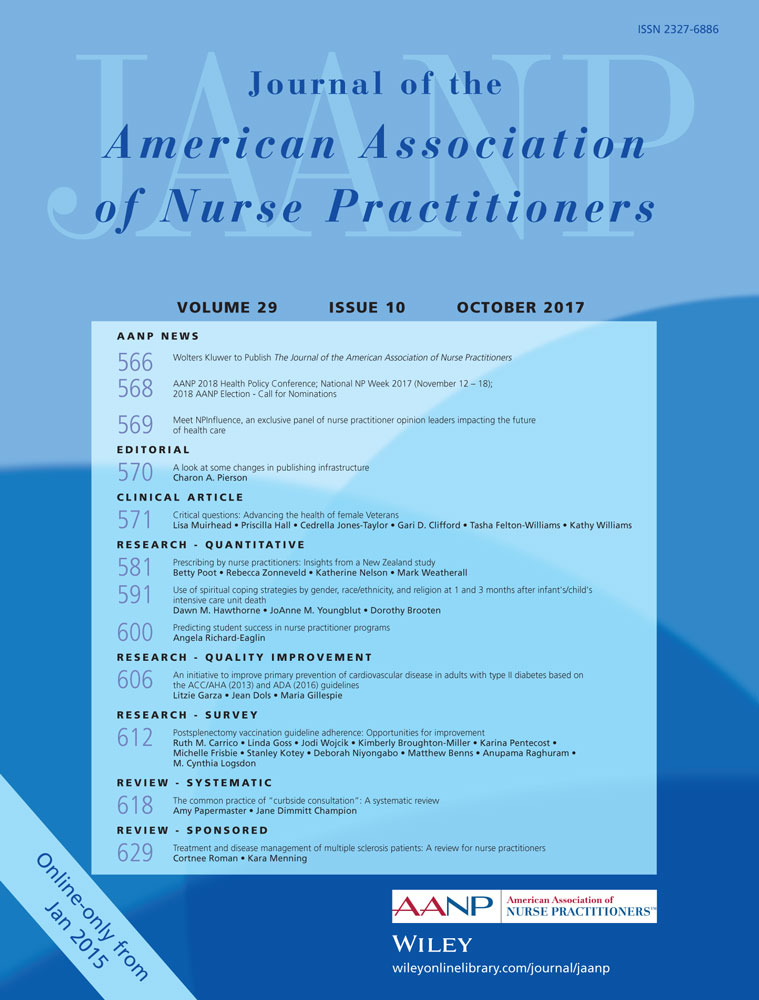Use of spiritual coping strategies by gender, race/ethnicity, and religion at 1 and 3 months after infant's/child's intensive care unit death
Abstract
Background and purpose
In the United States, 57,000 children (newborn to 18 years) die annually. Bereaved parents may rely on religious or spiritual beliefs in their grief. The study's purpose was to examine differences in parents’ use of spiritual and religious coping practices by gender, race/ethnicity, and religion at 1 and 3 months after infant/ICU death.
Methods
The sample consisted of 165 bereaved parents, 78% minority. The Spiritual Coping Strategies Scale was used to measure religious and spiritual coping practices, separately. One-way ANOVAs indicated that Black non-Hispanic mothers used significantly more religious coping practices at 3 months than White non-Hispanic mothers. Protestant and Catholic parents used more religious coping practices than the “no” and “other” religion groups at 1 and 3 months. Within the 30 mother–father dyads (paired t-tests), mothers reported significantly greater use of religious coping practices at 1 and 3 months and spiritual coping practices at 3 months than fathers.
Conclusion
Religious coping practices were most commonly used by Black mothers and Protestant and Catholic parents. Within dyads, mothers used more spiritual and religious coping practices than fathers.
Implications for practice
These findings are beneficial for healthcare personnel in providing support to bereaved parents of diverse races/ethnicities and religions.




